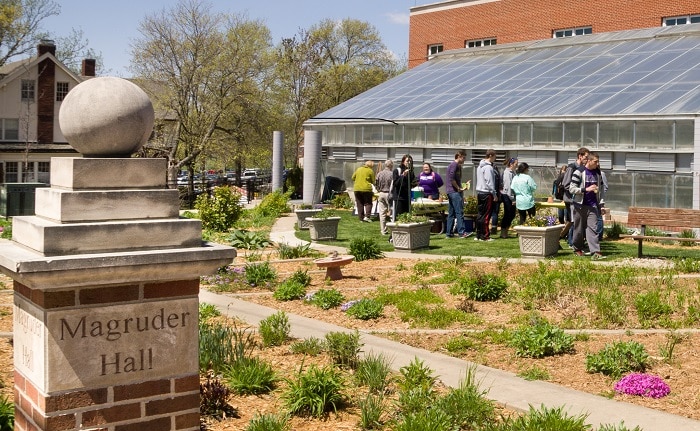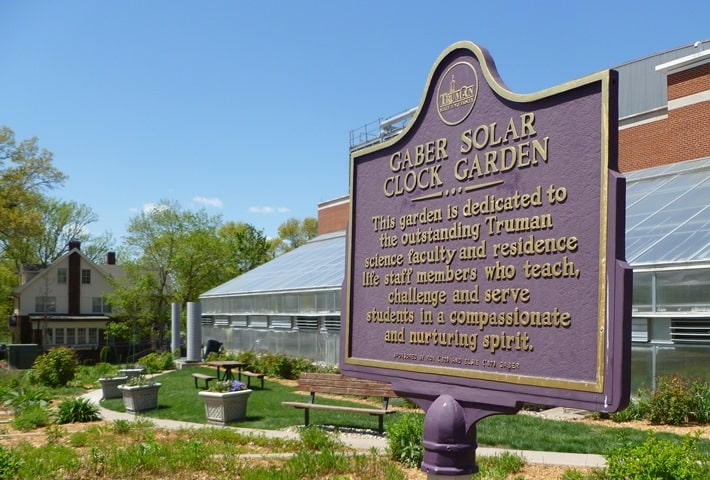
It’s no secret that the Truman State University campus is absolutely beautiful with unique gardens that remind us of the wonders of nature. One of these places, the Gaber Clock Garden, provided the perfect setting for an event on Earth Day which is celebrated around the world on April 22. Special events in the Truman community included the Gaber Clock Garden Celebration which welcomed the season’s pollinators, such as birds, bees, and butterflies including a black swallowtail butterfly that stopped by right on cue to sample the nectar from a rose verbena.
Located on the south end Magruder Hall, the Gaber Clock Garden may look like just another pretty garden to the casual passersby, but on closer observation, you will discover the story behind its name. Constructed in 2005 by Truman students, faculty, staff, and Kirksville community members, the garden is named for the generous alumni couple who funded its creation, Elsie (Kins) Gaber (’87) and Ron Gaber (’82). It was designed as a solar timepiece. On a sunny day, the tall gnomon in the center of the garden casts a shadow on the ground so you can deduce the approximate time of day.
This special place also serves as a Pollinator Garden which includes diverse plants selected to provide food for different types of pollinators throughout the growing season. “Emphasis is placed on including a large number of native species of plants,” says Anne Bergey, instructor of biology at Truman, who oversees the garden. “Pollinators are in trouble these days, and a garden like this not only provides a small oasis for them, but potentially also demonstrates that this type of garden can at the same time be a place of beauty and inspiration for people.”
The garden space also serves as an outdoor classroom, and everyone in the Truman’s community of engaged learners is invited to enjoy and be a part of this ongoing project. Ashley Henry, a Truman Leadership Scholar, worked with Bergey to coordinate the Earth Day Celebration. “I loved seeing people of all backgrounds enjoying the nature that has always been around them and taking time to enjoy and understand the importance of nature,” says Henry. “Professor Bergey and I shared information about pollinators, such as plants they need to survive (such as the milkweed for monarch caterpillars) and their importance to our ecosystem.”
Dozens of other students contributed in a variety of ways to the success of the Earth Day event, which provided an opportunity to share information on how we can provide quality habitat for other species even in an urban setting.
